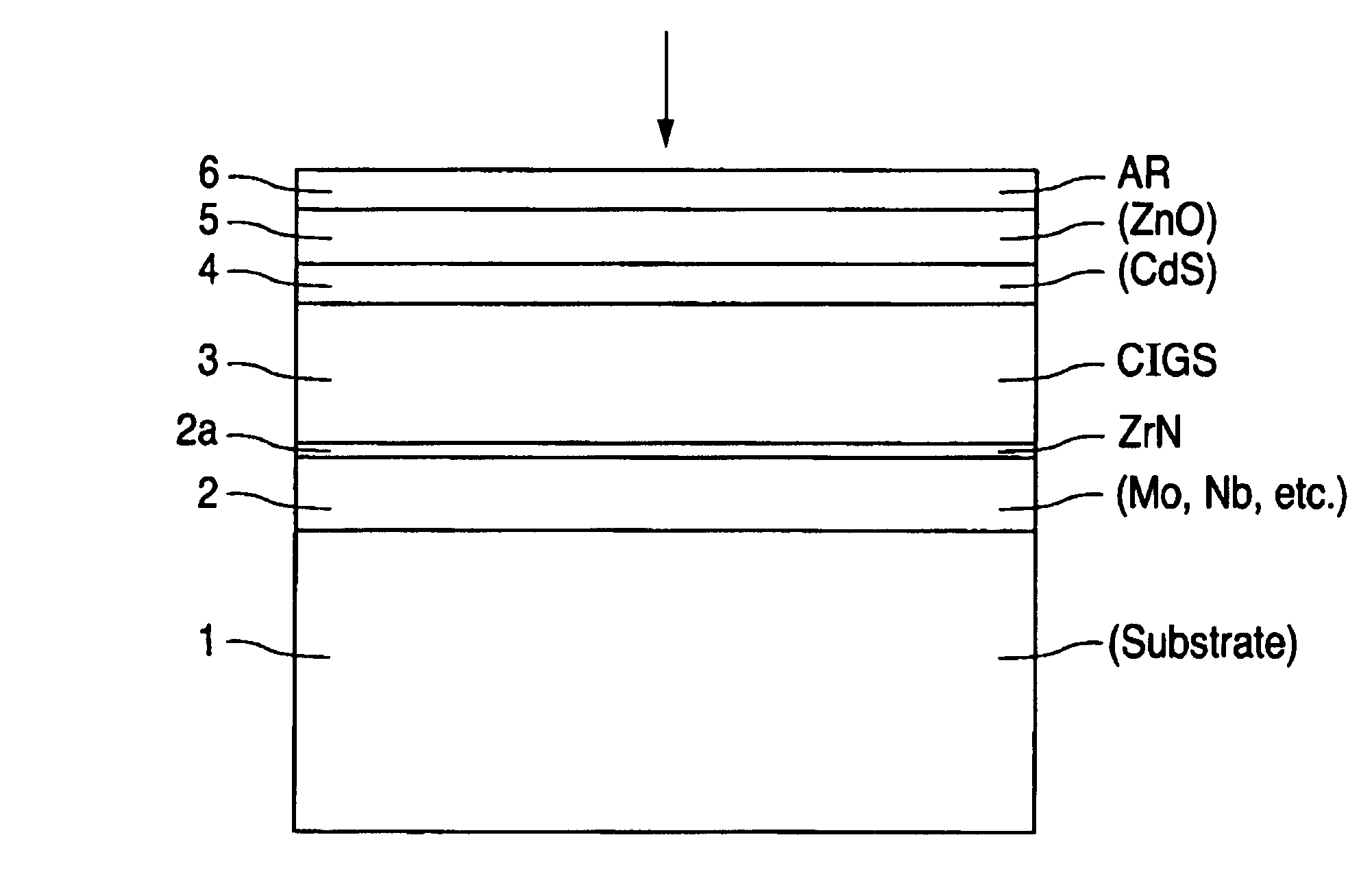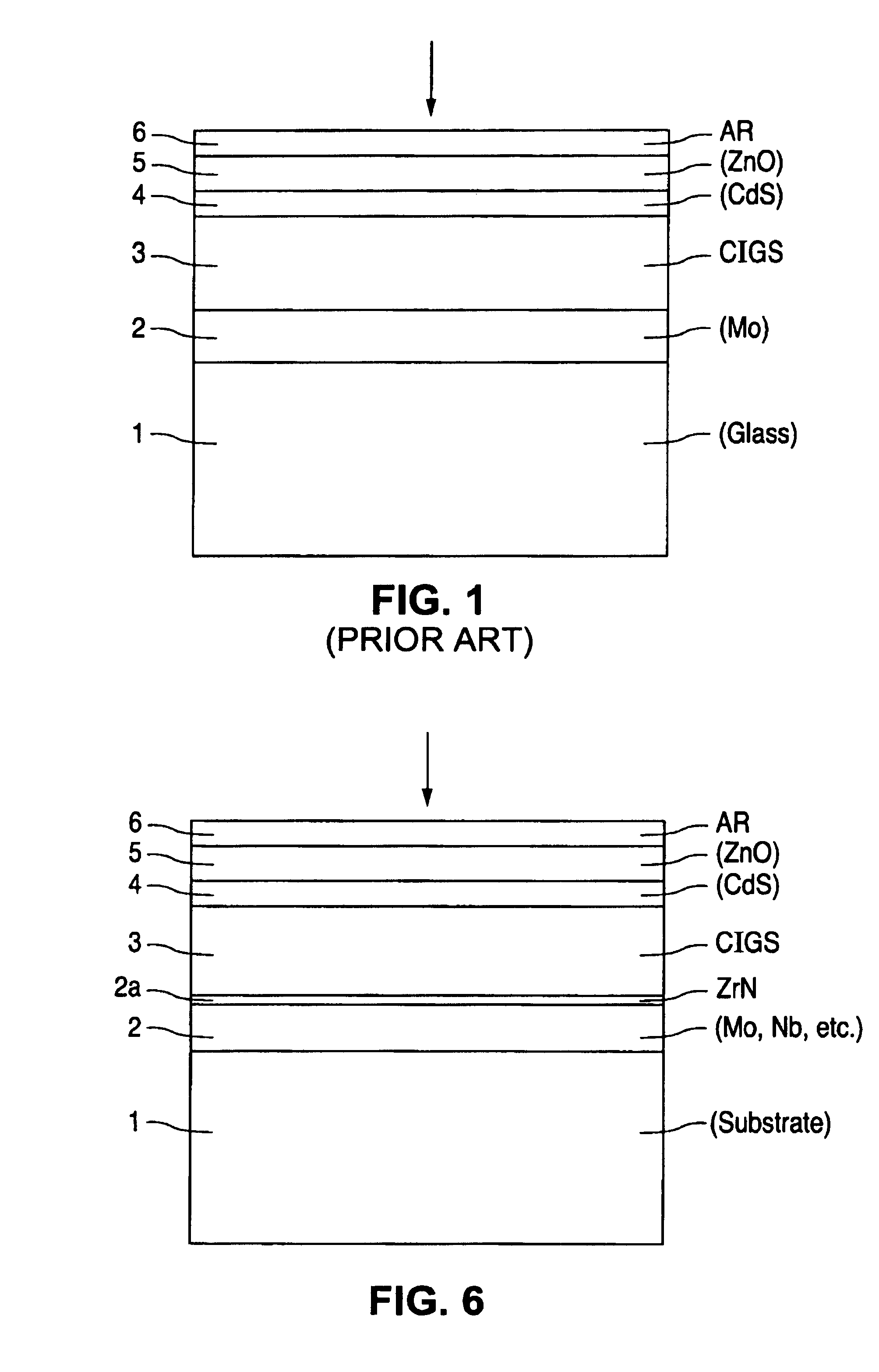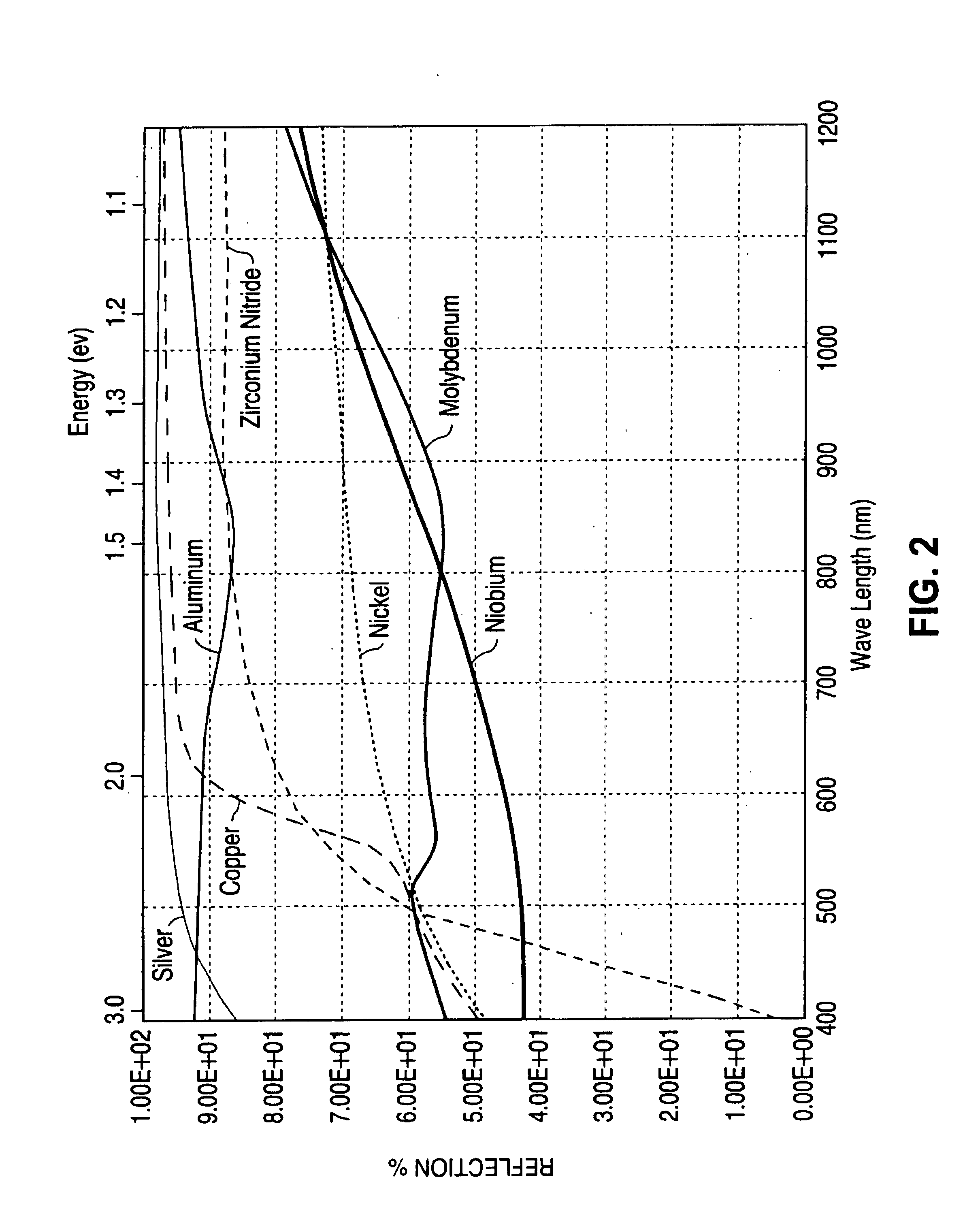Thin-film solar cells
a solar cell and thin film technology, applied in the field of photovoltaics, can solve the problems of not working for cigs at its normal processing temperature, application at relatively low process temperature, and alloys generally have poorer conductivity and reflectivity than pure metals, so as to improve the back contact/reflection layer, reduce the cost, and eliminate cadmium
- Summary
- Abstract
- Description
- Claims
- Application Information
AI Technical Summary
Benefits of technology
Problems solved by technology
Method used
Image
Examples
Embodiment Construction
[0052]The invention will now be described and compared with respect to the conventional prior art CIGS solar cell structure. The new cell structure and the manufacturing process will be detailed in relation to a modular roll-to-roll sputter deposition system designed specifically to provide an optimum implementation of the process.
[0053]It should be noted that, as used herein, the terms “over” and “on” both inclusively include “directly on” (no intermediate materials, elements or space disposed therebetween) and “indirectly on” (intermediate materials, elements or space disposed therebetween). For example, forming an element “on a substrate” can include forming the element directly on the substrate with no intermediate materials / elements therebetween, as well as forming the element indirectly on the substrate with one or more intermediate materials / elements therebetween.
[0054]FIG. 6 illustrates one of the simplest embodiments of a basic solar cell according to the present invention,...
PUM
| Property | Measurement | Unit |
|---|---|---|
| width | aaaaa | aaaaa |
| temperatures | aaaaa | aaaaa |
| thickness | aaaaa | aaaaa |
Abstract
Description
Claims
Application Information
 Login to View More
Login to View More - R&D
- Intellectual Property
- Life Sciences
- Materials
- Tech Scout
- Unparalleled Data Quality
- Higher Quality Content
- 60% Fewer Hallucinations
Browse by: Latest US Patents, China's latest patents, Technical Efficacy Thesaurus, Application Domain, Technology Topic, Popular Technical Reports.
© 2025 PatSnap. All rights reserved.Legal|Privacy policy|Modern Slavery Act Transparency Statement|Sitemap|About US| Contact US: help@patsnap.com



